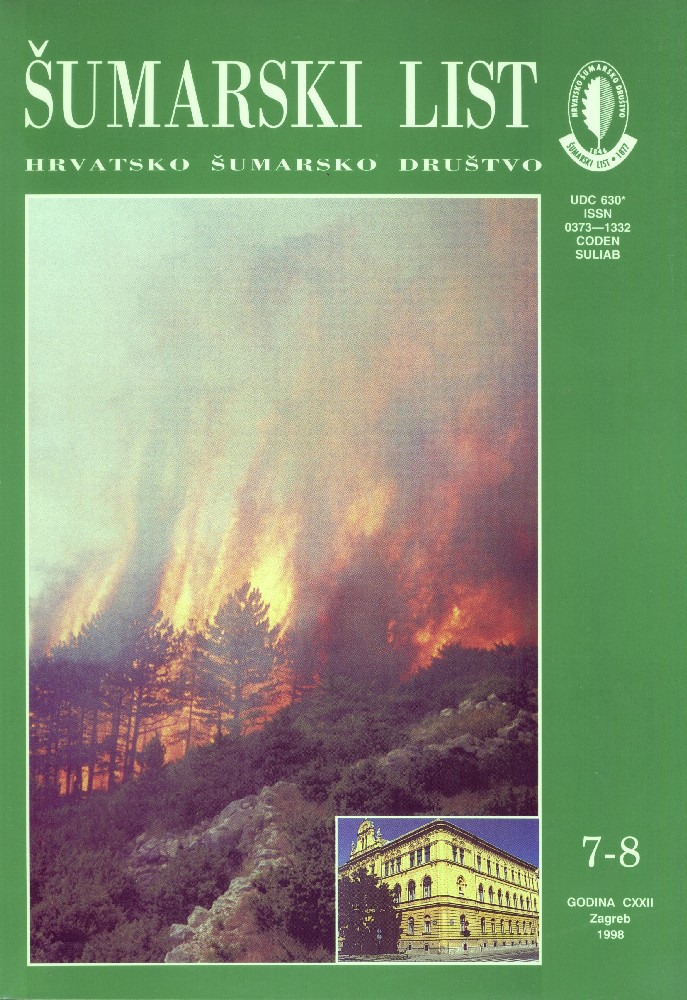| Matić, S. | |
| Reflections on the Croatian Forestry Status on the Threshold of 2lst Century
PDF
|
305 |
| Tarnaj, I. | |
| Reflections on the Croatian Forestry Status on the Threshold of 2lst Century
PDF
|
307 |
| |
| IZVORNI ZNANSTVENI ČLANCI |
| |
|
|
| Susmel, L. | UDK 630* 629 + 425. (Abiety-Fagetm dinaricum Treg. 1957) 001. |
| Forests of Gorski Kotar Yesterday and Today
pdf
HR
EN
|
309 |
| Meštrović, Š., Matić, S., Tustonjić, A., Pavelić, J. | UDK 630* 619 : 272 + 907.001. |
| The Forests of Medvednica Yesterday - Today - Tomorrow
pdf
HR
EN
|
315 |
| Štefančić,A. | UDK 630* 325 + 859. 001. |
| The Proportion of Wood Assortments in the Stemwood Volume of the Up-to-7 cm-Diamter Common Beech Timber in Even-Aged Stands
pdf
HR
EN
|
329 |
| |
| STRUČNI ČLANCI |
| |
|
|
| Zelić, J. | UDK 630* 226 (Abieti-Fagetum pannonicum Rauš 1969) |
| Management in Selection Forest Stands of Beech and Fir (Abieti Fagetum pannonicum) in Mt. Papuk. Ecological Approach
pdf
HR
EN
|
339 |
| Frković,A. | UDK 630* 156 + 945.3 |
| The Results of Creating the Karlovac Forestry School Programme for Training the Employees of "Hrvatske šume" in Evaluating the Hunting Trophies
pdf
HR
EN
|
347 |
| Pičman, D., Pentek, T. | UDK 630* 381 + 383 |
| Technology of Forest Road Stabilisation With Cement
pdf
HR
EN
|
353 |
Summary: The construction of forest mads on forest soils that have week carrying capacity, mostly in low-lying parts of the Republic of Croatia, unquestionably makes demands upon application one of the numerous methods of stabilisation of forest soils. One of the oldest chemical methods of soil improvement is stabilisation by the use of cement. Since the beginning of the 1970s, the stabilisation with cement as well as lime, were the most common methods. The description of the procedure for the improvement of transport systems by the use of cement, the machinery used in the process, and the division of basic advantages and disadvantages in relation to other stabilisation methods as well as classical way of constructing the forest roads are some of the interesting points of this work.
Key words: forest transport systems; low-lying areas; stabilisation with cement |



